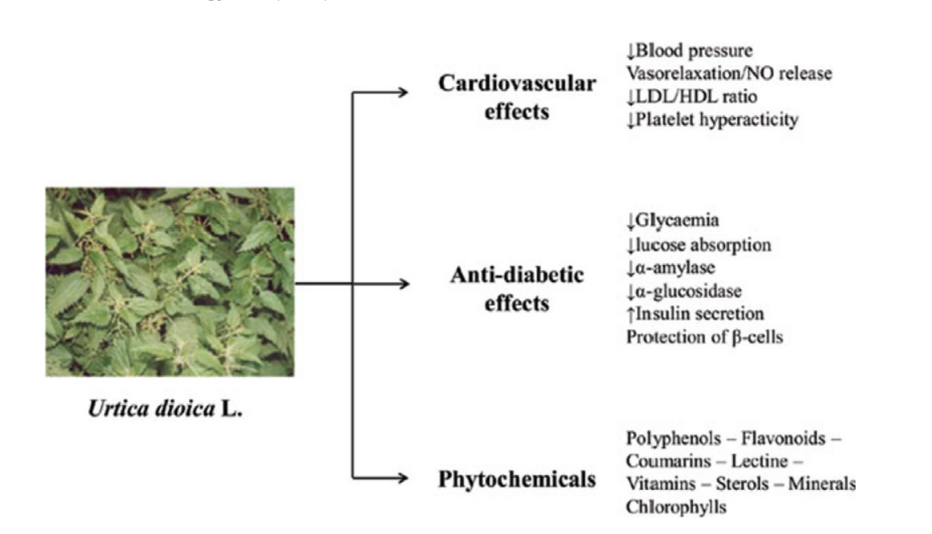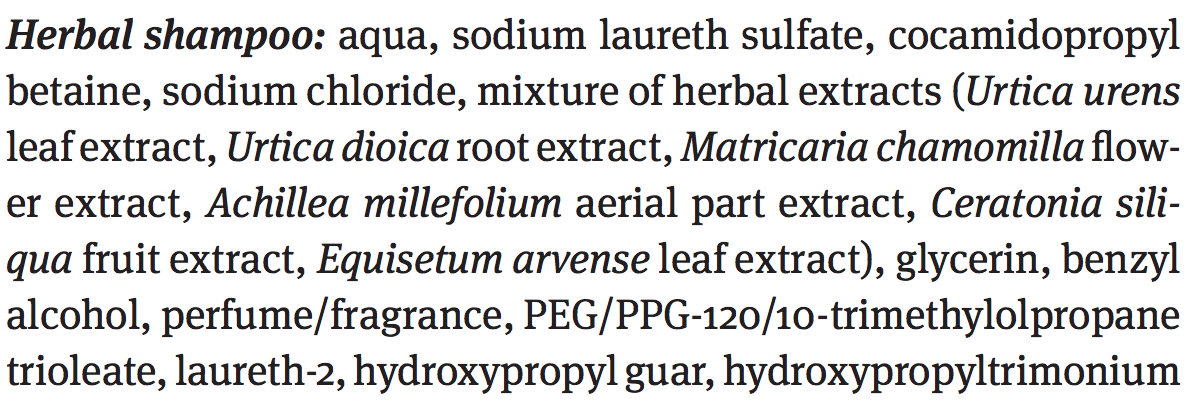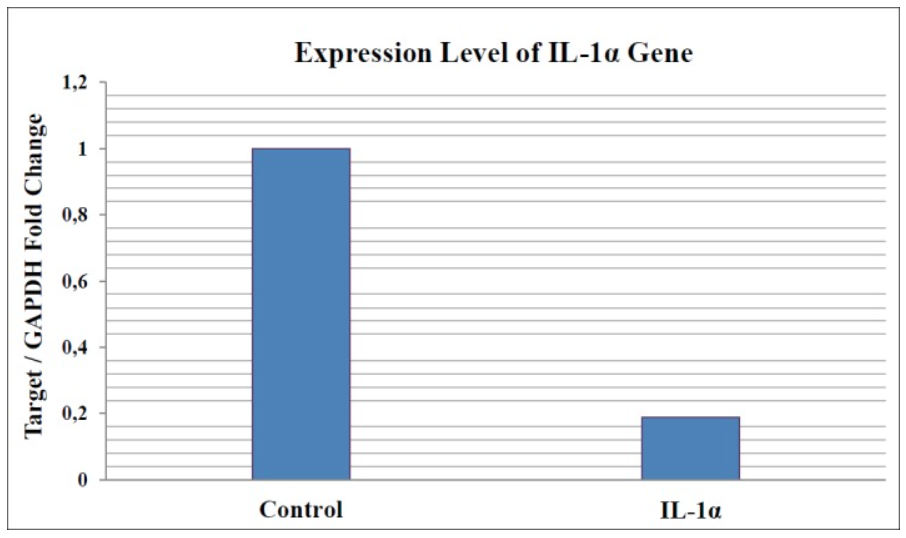- About
- Mission Statement
Education. Evidence. Regrowth.
- Education.
Prioritize knowledge. Make better choices.
- Evidence.
Sort good studies from the bad.
- Regrowth.
Get bigger hair gains.
Team MembersPhD's, resarchers, & consumer advocates.
- Rob English
Founder, researcher, & consumer advocate
- Research Team
Our team of PhD’s, researchers, & more
Editorial PolicyDiscover how we conduct our research.
ContactHave questions? Contact us.
Before-Afters- Transformation Photos
Our library of before-after photos.
- — Jenna, 31, U.S.A.
I have attached my before and afters of my progress since joining this group...
- — Tom, 30, U.K.
I’m convinced I’ve recovered to probably the hairline I had 3 years ago. Super stoked…
- — Rabih, 30’s, U.S.A.
My friends actually told me, “Your hairline improved. Your hair looks thicker...
- — RDB, 35, New York, U.S.A.
I also feel my hair has a different texture to it now…
- — Aayush, 20’s, Boston, MA
Firstly thank you for your work in this field. I am immensely grateful that...
- — Ben M., U.S.A
I just wanted to thank you for all your research, for introducing me to this method...
- — Raul, 50, Spain
To be honest I am having fun with all this and I still don’t know how much...
- — Lisa, 52, U.S.
I see a massive amount of regrowth that is all less than about 8 cm long...
Client Testimonials150+ member experiences.
Scroll Down
Popular Treatments- Treatments
Popular treatments. But do they work?
- Finasteride
- Oral
- Topical
- Dutasteride
- Oral
- Topical
- Mesotherapy
- Minoxidil
- Oral
- Topical
- Ketoconazole
- Shampoo
- Topical
- Low-Level Laser Therapy
- Therapy
- Microneedling
- Therapy
- Platelet-Rich Plasma Therapy (PRP)
- Therapy
- Scalp Massages
- Therapy
More
IngredientsTop-selling ingredients, quantified.
- Saw Palmetto
- Redensyl
- Melatonin
- Caffeine
- Biotin
- Rosemary Oil
- Lilac Stem Cells
- Hydrolyzed Wheat Protein
- Sodium Lauryl Sulfate
More
ProductsThe truth about hair loss "best sellers".
- Minoxidil Tablets
Xyon Health
- Finasteride
Strut Health
- Hair Growth Supplements
Happy Head
- REVITA Tablets for Hair Growth Support
DS Laboratories
- FoliGROWTH Ultimate Hair Neutraceutical
Advanced Trichology
- Enhance Hair Density Serum
Fully Vital
- Topical Finasteride and Minoxidil
Xyon Health
- HairOmega Foaming Hair Growth Serum
DrFormulas
- Bio-Cleansing Shampoo
Revivogen MD
more
Key MetricsStandardized rubrics to evaluate all treatments.
- Evidence Quality
Is this treatment well studied?
- Regrowth Potential
How much regrowth can you expect?
- Long-Term Viability
Is this treatment safe & sustainable?
Free Research- Free Resources
Apps, tools, guides, freebies, & more.
- Free CalculatorTopical Finasteride Calculator
- Free Interactive GuideInteractive Guide: What Causes Hair Loss?
- Free ResourceFree Guide: Standardized Scalp Massages
- Free Course7-Day Hair Loss Email Course
- Free DatabaseIngredients Database
- Free Interactive GuideInteractive Guide: Hair Loss Disorders
- Free DatabaseTreatment Guides
- Free Lab TestsProduct Lab Tests: Purity & Potency
- Free Video & Write-upEvidence Quality Masterclass
- Free Interactive GuideDermatology Appointment Guide
More
Articles100+ free articles.
-
OS-01 Hair Review: Does It Live Up to the Hype?
-
Stretching The Truth: 3 Misrepresented Claims From Hair Loss Studies
-
Minoxidil Shedding – What to Expect & When it Stops
-
Does Minoxidil Cause Skin Aging?
-
Thermus Thermophilus Extract Does Not Increase Hair Density By 96.88%, Despite Dermatology Times’ Claims.
-
Does Retinoic Acid (Tretinoin) Improve Hair Growth From Minoxidil?
-
Topical Cetirizine: An Anti-Histamine That Regrows Hair? (New Evidence)
-
Scalp Psoriasis: Symptoms, Causes, and Effects on Hair Loss
PublicationsOur team’s peer-reviewed studies.
- Microneedling and Its Use in Hair Loss Disorders: A Systematic Review
- Use of Botulinum Toxin for Androgenic Alopecia: A Systematic Review
- Conflicting Reports Regarding the Histopathological Features of Androgenic Alopecia
- Self-Assessments of Standardized Scalp Massages for Androgenic Alopecia: Survey Results
- A Hypothetical Pathogenesis Model For Androgenic Alopecia:Clarifying The Dihydrotestosterone Paradox And Rate-Limiting Recovery Factors
Menu- AboutAbout
- Mission Statement
Education. Evidence. Regrowth.
- Team Members
PhD's, resarchers, & consumer advocates.
- Editorial Policy
Discover how we conduct our research.
- Contact
Have questions? Contact us.
- Before-Afters
Before-Afters- Transformation Photos
Our library of before-after photos.
- Client Testimonials
Read the experiences of members
Before-Afters/ Client Testimonials- Popular Treatments
-
ArticlesStinging Nettle For Hair Loss: Real vs. Perceived Benefits
First Published Apr 15 2022Last Updated Oct 29 2024IngredientsNatural Remedies Researched & Written By:Perfect Hair Health Team
Researched & Written By:Perfect Hair Health Team
Want help with your hair regrowth journey?
Get personalized support, product recommendations, video calls, and more from our researchers, trichologists, and PhD's dedicated to getting you the best possible outcomes.
Learn MoreArticle Summary
Stinging nettle is a popular natural remedy for hair loss. Unfortunately, quality studies on stinging nettle (and its effects on hair growth) are scarce. Most marketers selling stingle nettle relying almost exclusively on petri dish studies and mouse models to suggest it may have some hair-promoting effects. But historically, these studies rarely translate to humans – especially humans with hair loss. Nonetheless, we’ve worked with people who swear by stinging nettle (topically and orally) as a hair growth aid. There’s also evidence that this extract may exert powerful anti-inflammatory and antimicrobial properties, and possibly modulate hormonal profiles in men and women. In this article, we’ll investigate the science on stinging nettle and give our recommendations for whether its potential for hair regrowth is worth the cost of its investment.
Full Article
Stinging nettle is a type of flowering plant, generally regarded as a weed, that is regularly discussed within the hair loss space. This is because stinging nettle offers a variety of unique compounds that appear to modulate our hormones.
People consume stinging nettle either as the whole plant extract, or generally the key compounds it contains. Whether it be the gaelic acid or the zinc-protein complexes, people choose to utilize stinging nettle for a myriad of different compounds that directly act on our hormonal centers.
Stinging Nettle – An Underrated Hair Loss Herb?
Modulating our hormones to a more favorable profile is not a new approach either. This is actually a very well established mechanism by which we can acquire some of the benefits associated with drugs like finasteride and spironolactone, for our hair.
But finasteride and spironolactone are very potent drugs that act specifically on certain sites like the 5AR enzyme or the androgen receptor. The data surrounding stinging nettle, its targets, and its effects, remains inconsistent.
People have argued that it can either help prevent hair loss or serve as a vehicle for worsening hair loss. Why? Well, hormone modulation is rarely ever one sided.
Some key questions relating to stinging nettle include:
- Does it stop aromatase activity?
- Does it increase testosterone production?
- Does it decrease DHT production?
- Does it increase estrogen signaling?
These points, and more, will be addressed in this article.
Stinging Nettle Demystified
Dhouibi, R., Ksouda, K., Ben Salem, M., Sahnoun, Z., Hammami, S., Zeghal, K. M., & Affes, H. (2019). Screening of pharmacological uses of Urtica dioica and others benefits. Progress in Biophysics and Molecular Biology.
What’s In Stinging Nettle?
Stinging nettle is certainly a special plant, as evidenced by its use in replenishing over-fertilized soil with key elements and minerals. Some of these minerals present in stinging nettle are in such large amounts that it quite literally blows away most multivitamins out of the market.
For example, in about 100g of stinging nettle, there is about 50mg of chlorophyll – the pigment molecule that gives plants their characteristic green color. Chlorophyll has been shown to be a useful anti-inflammatory for hair loss.
With that high chlorophyll concentration, you also get a load of key micronutrients needed for cells to function. Stinging nettle contains high amounts of the following micronutrients:
- Zinc
- Copper
- Manganese
- Cobalt (needed for vitamin B12)
Additionally, it also contains a large amount of gallic acid, a molecule known for its uniquely beneficial effects on the cells of the hair microenvironment such as dermal papilla. Gallic acid is also usually part of many cosmetic drugs for its synergistic effects with azelaic acid, a well known hair loss compound.
The hormone modulatory effects of stinging nettle also come from the numerous phytochemicals it contains, such as:
- Secoisolariciresinol, capable of modulating the aromatase enzyme.
- Lignans, which affect SHBG.[1]https://www.thieme-connect.com/products/ejournals/abstract/10.1055/s-2006-957756
- Flavanols that are able to counteract DHT.
This pharmacological gives some credence to the use of Stinging nettle for hormonal modulation.[2]https://pubmed.ncbi.nlm.nih.gov/31163183/ But what effect does this have on hair loss?
Why Do People Believe Stinging Nettle Can Help With Hair Loss?
Dhouibi, R., Ksouda, K., Ben Salem, M., Sahnoun, Z., Hammami, S., Zeghal, K. M., & Affes, H. (2019). Screening of pharmacological uses of Urtica dioica and others benefits. Progress in Biophysics and Molecular Biology.
Stinging nettle may have first garnered traction as a hair loss treatment when it was used in older studies on mice with prostate hyperplasia (a disease where the prostate gland enlarges, and primarily thought of being due to the influence of DHT). In these studies, stinging nettle showed a therapeutic effect.
It was then later confirmed in clinical trials that stinging nettle indeed does beneficially reduce prostate hyperplasia. Ever since, there have been combination therapies that included stinging nettle with finasteride for reduction of prostate hyperplasia.[3]https://pubmed.ncbi.nlm.nih.gov/7509261/[4]https://pubmed.ncbi.nlm.nih.gov/15045190/[5]https://pubmed.ncbi.nlm.nih.gov/10971268/
Since stinging nettle by itself favorably reduces systemic DHT production without altering testosterone production. It has also been used in the bodybuilding world to reduce androgenic effects from hormones – such as hair loss from steroid use.
This is probably where the use of stinging nettle as a hair loss therapeutic for androgenic alopecia originated. However, that’s not all stinging nettle can do. Pharmacological evidence exists for its ability to reduce:
- Overactive immune signaling, which is present in alopecia areata.
- Excess production of prostaglandins and lipid peroxides negatively affects scalp health and are related to conditions like seborrheic dermatitis.
- Heavy metal toxicity and improve mineral deficiencies, which can lead to telogen effluvium hair loss.[6]https://pubmed.ncbi.nlm.nih.gov/31163183/
What About The Evidence On Humans and Hair Loss, Specifically?
After scouring the literature for any evidence of the use of stinging nettle in hair loss, via randomized controlled trials and reviews, no results came up.
Then, by expanding our range to include studies on the use of stinging nettle in vitro and ex vivo, still, no results were found.
Similarly, when further expanding to include mice and animal models of stinging nettle for hair loss, no experiment had been performed to date.
The Perfect Hair Health team then searched beyond the more reputed scientific journals that had investigated stinging nettle for hair loss. Here were our only findings:
- In a single-blinded clinical trial on the use of stinging nettle (but as part of a proprietary combination of ingredients within a shampoo, and herbal solution), researchers from Slovenia showed some incredible results from this formulation. The results appear almost too good to be true.[7]https://www.acta-apa.org/journals/acta-dermatovenerol-apa/papers/10.15570/actaapa.2018.13/actaapa.2018.13.pdf
Pekmezci, Erkin & Dündar, Cihat & Turkoglu, Murat. (2018). A proprietary herbal extract against hair loss in androgenetic alopecia and telogen effluvium: A placebo-controlled, single-blind, clinical-instrumental study. Acta dermatovenerologica Alpina, Pannonica, et Adriatica. 27. 51-57. 10.15570/actaapa.2018.13.
For example, when comparing the groups to each other (shampoo, shampoo + solution, vs. placebo for either shampoo or shampoo + solution), their significance threshold exceeded the requirements for statistically significant results by a factor of 100x to 1,000x. And when compared to placebo, by 10,000x.
Pekmezci, Erkin & Dündar, Cihat & Turkoglu, Murat. (2018). A proprietary herbal extract against hair loss in androgenetic alopecia and telogen effluvium: A placebo-controlled, single-blind, clinical-instrumental study. Acta dermatovenerologica Alpina, Pannonica, et Adriatica. 27. 51-57. 10.15570/actaapa.2018.13.
These kinds of results are worthy of much further investigation. So why has it not been investigated until now?
First, they took qualitative values into account (like how they felt about their own hair after a couple of months) for this assessment. Which, by its nature, can drive unrealistic results. When we look at the quantitative value, we notice just a mild increase in hair count when compared to the placebo.
Pekmezci, Erkin & Dündar, Cihat & Turkoglu, Murat. (2018). A proprietary herbal extract against hair loss in androgenetic alopecia and telogen effluvium: A placebo-controlled, single-blind, clinical-instrumental study. Acta dermatovenerologica Alpina, Pannonica, et Adriatica. 27. 51-57. 10.15570/actaapa.2018.13.
This graph shows that at the beginning of the study, the hair count for the placebo was 217. Hair counts for treatment groups were around 210-213. After six months, T6, hair count for placebo stayed the same but hair count for the best group rose to 225. That’s, at best, a 15 hair count increase.
Nonetheless, this clinical trial deserved further study and replication. However, the confounding ingredients really make it tough to ascertain if the effects were solely from stinging nettle.
Aside from this one study, there exist patents for stinging nettle as a hair loss therapeutic, containing the following additional ingredients:
Chizick, Steven. Natural Preparation For Treatment Of Male Pattern Hair Loss. WO2000056269 A2, World Intellectual Property Organization, 29 September 2000.
Unfortunately, the only additional piece of evidence we have for stinging nettle for alopecia is its potential use in scarring alopecia and alopecia areata.[8]https://patents.google.com/patent/WO2000056269A2/en
- In this in vitro analysis, a herbal extract containing stinging nettle (but also containing Equisetum Arvense Leaf Extract, Achillea Millefolium Aerial Part Extract, Matricaria Chamomilla Flower Extract and Ceratonia Siliqua Fruit Extract), was assessed for its effects on interleukin-1α (IL-1α), a proinflammatory cytokine.[9]https://www.ncbi.nlm.nih.gov/pmc/articles/PMC6126931/
Their results showed about a 5x reduction in IL-1α signaling, reaching great significance.
Pekmezci E, Dundar C, Turkoglu M. Proprietary Herbal Extract Downregulates the Gene Expression of IL-1α in HaCaT Cells: Possible Implications Against Nonscarring Alopecia. Med Arch. 2018;72(2):136-140.
Aside from these studies on hair related mechanisms and hair loss as a whole, stinging nettle has been investigated for its effects on:
- Inhibiting aromatase, which is generally raised in androgenic alopecia and metabolic dysfunction. Aromatase is the enzyme known to be able to convert testosterone into estrogen.[10]https://pubmed.ncbi.nlm.nih.gov/17238068/
- A systematic review denoted that stinging nettle showed promising results against inflammation, but that it requires further trials to determine the true effect size.[11]https://pubmed.ncbi.nlm.nih.gov/23391017/
- As compared to placebo, stinging nettle showed benefit in reducing allergic rhinitis, a condition marked by higher histamine release, making it potentially useful against androgenic alopecia and alopecia areata.[12]https://pubmed.ncbi.nlm.nih.gov/2192379/
- A review on stinging nettle concluded it had great anti-microbial activity [13]https://pubmed.ncbi.nlm.nih.gov/35251206/
- A systematic review found that stinging nettle reduced fasting blood sugar in type two diabetics, but had no real substantial effect on fasting insulin or their HBA1C levels.[14]https://pubmed.ncbi.nlm.nih.gov/31802554/
Accessing the Data On Stinging Nettle
The wide-ranging data on stinging nettle makes it difficult to draw hard conclusions about its efficacy. With that said, stinging nettle may prove useful for general health, scalp health, and immune signaling.
Most notably, there is a lack of evidence on its use in isolation, or in combination, with other therapies to treat alopecia of any kind. Because no data exists, it would be a stretch to recommend stinging nettle for hair loss.
While it has shown effects on hormonal modulation, it can’t be assumed that stinging nettle lowers DHT and effectively treats androgenic alopecia.
Based On The Evidence
Should We Use Stinging Nettle?
When it comes to stinging nettle for general health, it can be a useful tool to have in the arsenal. It favorably modulates hormones and reduces blood sugar, which can affect our extracellular matrix and collagen. It has also been shown to prevent the rise of inflammatory molecules.
For Those Who Plan To Use It, What Is The Best Frequency and Dosage?
Most of the studies performed use stinging nettle extract. The extracts are made up of the roots, the leaves, or a whole-plant combination. The dosing ranged from as little as 200 mg to as high as 1000 mg, and typically not exceeding this amount.
Further, in vitro studies used a moderate percentage of around 10%.
Of the studies performed on humans, stinging nettle was used daily whether in conjunction with other herbs or medications.
Oral Or Topical?
We believe that oral supplementation may be the best for the general health benefits stinging nettle can provide. Topical formulations can produce some favorable effects on the scalp as well. Stinging nettle may also reduce complications present with seborrheic dermatitis and act as an antimicrobial with positive implications for androgenic alopecia.
Additional Advice?
There is a possibility that some people may actually be allergic to stinging nettle. It’s known as stinging nettle because the chemical released by its leaves can induce a rash or mild stinging sensation. Before using stinging nettle, try rubbing a bit of pure stinging nettle extract on your skin to see if you have any allergic reactions.
Watch this video to see how it can be done.
We’ll continue to update this article as research emerges.
References[+]
References ↑1 https://www.thieme-connect.com/products/ejournals/abstract/10.1055/s-2006-957756 ↑2, ↑6 https://pubmed.ncbi.nlm.nih.gov/31163183/ ↑3 https://pubmed.ncbi.nlm.nih.gov/7509261/ ↑4 https://pubmed.ncbi.nlm.nih.gov/15045190/ ↑5 https://pubmed.ncbi.nlm.nih.gov/10971268/ ↑7 https://www.acta-apa.org/journals/acta-dermatovenerol-apa/papers/10.15570/actaapa.2018.13/actaapa.2018.13.pdf ↑8 https://patents.google.com/patent/WO2000056269A2/en ↑9 https://www.ncbi.nlm.nih.gov/pmc/articles/PMC6126931/ ↑10 https://pubmed.ncbi.nlm.nih.gov/17238068/ ↑11 https://pubmed.ncbi.nlm.nih.gov/23391017/ ↑12 https://pubmed.ncbi.nlm.nih.gov/2192379/ ↑13 https://pubmed.ncbi.nlm.nih.gov/35251206/ ↑14 https://pubmed.ncbi.nlm.nih.gov/31802554/ Want help with your hair regrowth journey?
Get personalized support, product recommendations, video calls, and more from our researchers, trichologists, and PhD's dedicated to getting you the best possible outcomes.
Learn More
Perfect Hair Health Team
"... Can’t thank @Rob (PHH) and @sanderson17 enough for allowing me to understand a bit what was going on with me and why all these [things were] happening ... "
— RDB, 35, New York, U.S.A."... There is a lot improvement that I am seeing and my scalp feel alive nowadays... Thanks everyone. "
— Aayush, 20’s, Boston, MA"... I can say that my hair volume/thickness is about 30% more than it was when I first started."
— Douglas, 50’s, Montréal, CanadaWant help with your hair regrowth journey?
Get personalized support, product recommendations, video calls, and more from our researchers, trichologists, and PhD's dedicated to getting you the best possible outcomes.
Join Now - Mission Statement
 Scroll Down
Scroll Down












